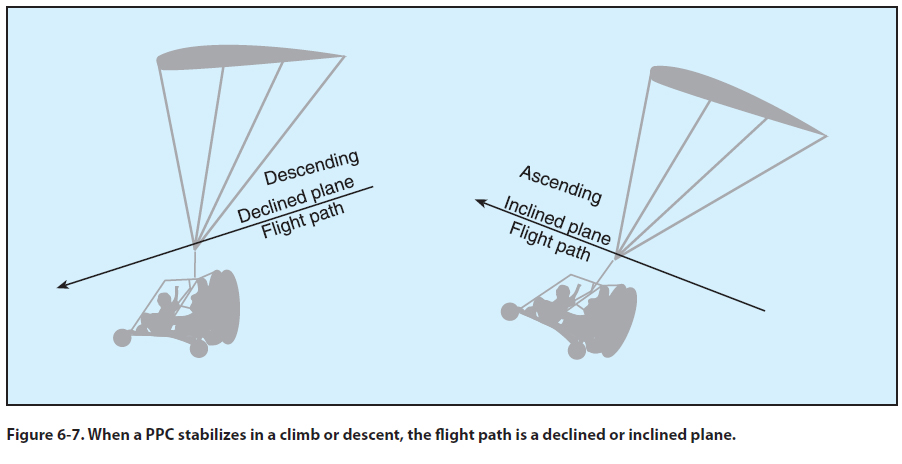|
Chapter 6 — Basic Flight Maneuvers
Climbs and Climbing Turns, Descents
and Descending Turns
To gain altitude, increase engine RPM. To lose altitude,
decrease engine RPM. When a PPC enters a
climb, it changes flight path from level or descending
(with level or declined planes) to ascending with an
inclined plane. [Figure 6-7]

Straight climbs are achieved by increasing throttle
above the level flight setting and holding a straight
heading. Climbing turns require more throttle than
straight climbs.
During any descent, the pilot must clear the area below
and to the turning side (if applicable) before beginning
these maneuvers.
To descend, reduce throttle below the straight and
level RPM while flying straight or in a turn.
Throttle reduction is the basis for determining the
descent rate. Banking the aircraft will also increase
the descent rate. Greater bank angles result in greater
descent rates.
|

